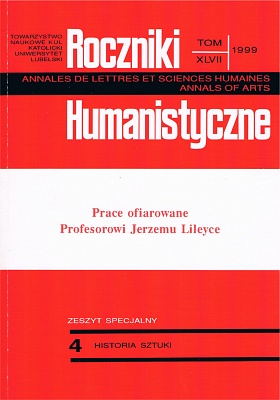Is Hondius or Schultz the Author of the Portrait Study of Karol Ferdynand Vasa?
Abstract
Standing face to face with a civil war and a danger of destabilisation of the country, King Jan Kazimierz decided that a change in his official iconography was so important that almost immediately after succeeding to the throne (1648) he reorganised his artistic court. In 1649 the outstanding portrait painter Daniel Schultz was employed and he was charged with the task of creating the image of the monarch that would be suitable for the requirements of the new authorities' propaganda and at the same time would meet the society's expectations. (It was for the same reasons that the great Roman sculptor Francesco Rossi was brought to Poland in 1651.) Of the former group of artists among others Willem Hondius was kept – as it turns out not a very able draughtsman, but a good copper engraver, who proved useful in his earlier works for the royal court, and now was indispensable for putting into effect Jan Kazimierz's propaganda aims.
Analysing the portrait study of the King's brother, Karol Ferdynand Vasa (1650) from the collection of the National Museum in Gdańsk (Fig. 1), Gajewski finds in it both new principles of the art of portrait introduced into the official image by Daniel Schultz, and the artistic qualities characteristic of Schultz's painting (Fig. 2, 3). Gajewski challenges the proposition put forward in the literature of the subject saying that it is Hondius who is the author of the portrait study of Karol Ferdynand, and he claims that the author of the study is Schultz. He also thinks that the study is Schultz's drawing for the graphic portrait of Karol Ferdynand Vasa that was not used. The portrait was made (1650) by Hondius after another pattern by Daniel Schultz (Fig. 4).
Copyright (c) 1999 Roczniki Humanistyczne

This work is licensed under a Creative Commons Attribution-NonCommercial-NoDerivatives 4.0 International License.





